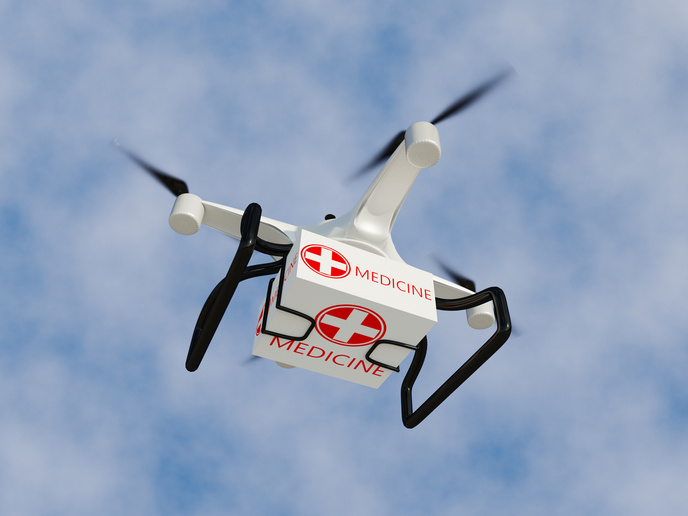Drones to transform hospital services
Internationally recognised San Raffaele Hospital in Milan, Italy, has launched demonstrations of drone services in urgent medicine delivery and hospital surveillance. The campaign is part of the EU-funded FF2020(opens in new window) project that is developing a state-of-the-art urban air mobility infrastructure to help improve European citizens’ quality of life and create sustainable cities. Conducted from March to May 2023, the drone demonstrations showcased the delivery of pharmaceuticals and biological samples to improve hospital logistics and the surveillance of hospital spaces to support San Raffaele Hospital’s current security system. The hospital is the third of five living labs chosen for FF2020 across Europe to test different drone use cases, including crowd monitoring, building and infrastructure inspection, and 5G communication quality measurement.
Testing in a miniature city
“Since it is difficult to fly drones due to all the legislative, safety and so on implications, a ‘living lab’ type setting is necessary,” states Alberto Sanna, Director of San Raffaele Hospital’s Center for Advanced Technology in Health and Wellbeing, in a news item(opens in new window) posted on ‘Breaking Latest News’. “What does it mean? San Raffaele is a ‘miniature’ city: has all the infrastructures (hospital, cogeneration plant, car parks, shops, hotel, sports fields, heliport, and part of a metropolitan area …) and 25,000 people who visit it every day. So we have the opportunity to experiment with certain solutions ‘live’.” Using San Raffaele Hospital as a living lab of a city of the future, the FF2020 team is demonstrating that a drone transport system is technically and organisationally feasible in the healthcare sector. The first demonstration of biomedical material transport involves healthcare personnel requesting a drug from the hospital pharmacy. A pharmacy staff member places the product in a container attached to the drone, which then delivers the drug to the exact location requested. “During the demonstration, the drone took off from an internal courtyard of the hospital, adjacent to the pharmacy depot, and carried the medicine to another area of the hospital. In the future, this system will be able to connect clinics, pharmacies and laboratories scattered throughout the city and region, for more flexible, efficient and sustainable transport,” reports an FF2020 press release(opens in new window). In the second use case (hospital surveillance), security personnel send the drone to a specific point on the map. The drone then transmits “video footage in real-time, offering situational awareness that can be very valuable in managing an adverse event.” Despite Europeans’ overall positive outlook on using drones for medical or emergency transport, “initiatives in this area are still scarce and experimental” in Italy, according to Sanna. “But I believe it,” he goes on to say. “I am convinced that our children will live with the presence of flying drones, as we did with airplanes. It is needed to aggregate resources and skills, which are very fragmented today.” The FF2020 (Creating the 21st century spatial ecosystem) project ends in November 2023. For more information, please see: FF2020 project website(opens in new window)



